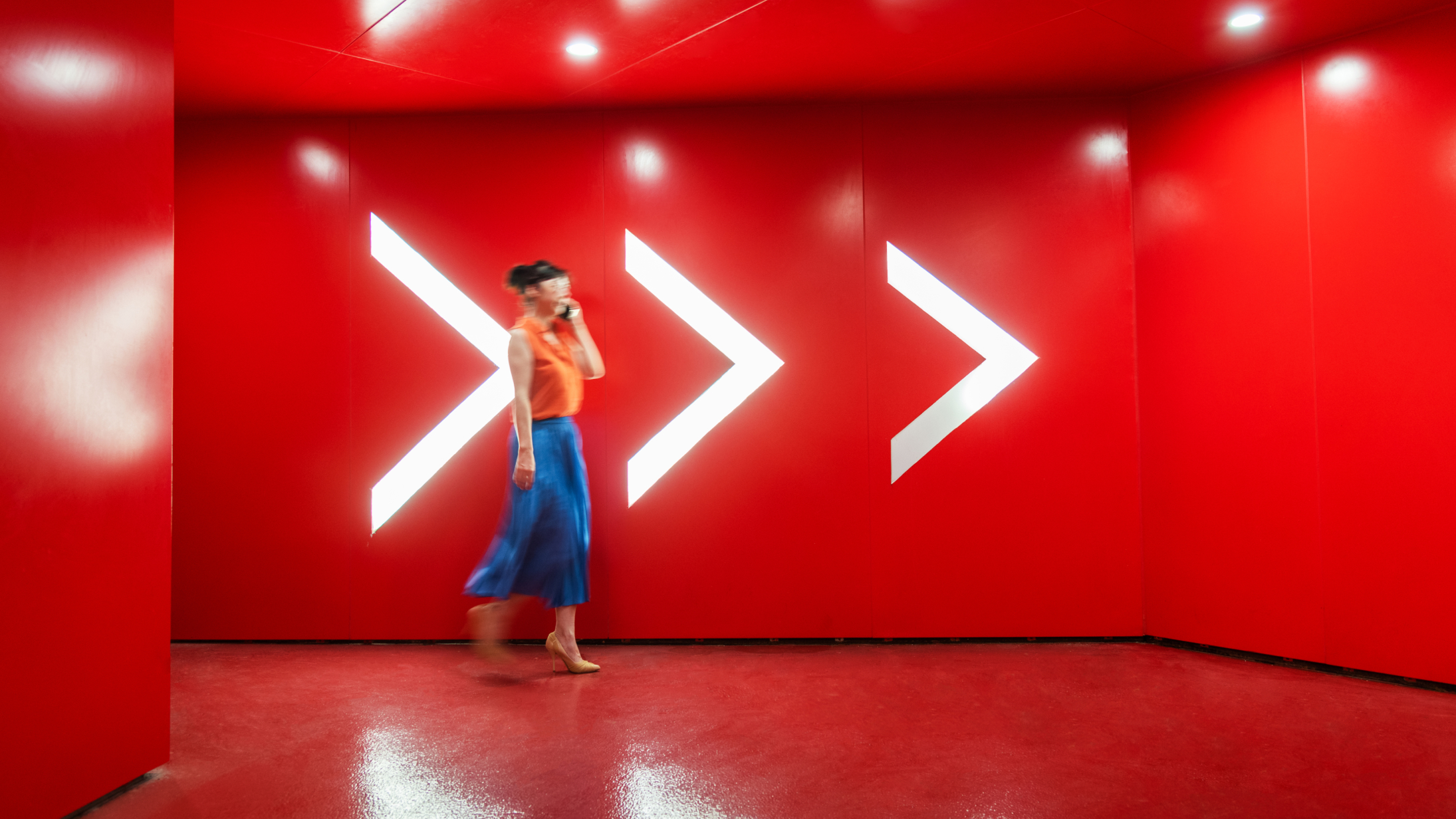What issue can we solve for you?
Type in your prompt above or try one of these suggestions
Suggested Prompt


3 Ways to Fight Economic Uncertainty With a Customer Data Strategy
Leading organizations are monetizing customer data and hyper- personalizing experiences to grow.


The times, they are a-changing. In the midst of global crises, constraints and transitions across industries, uncertainty has become the new normal. Today’s regulatory climate adds to the mixed economic signals, as data privacy policies and regulations underline the importance of respecting customers’ individual rights when it comes to personalization. These evolving policies are all the more urgent in the AI era, when new regulations seem to emerge overnight.
However, consumers still expect personalized, easy experiences. There is still a tremendous opportunity to use data to accomplish this, but businesses today must work harder to earn consumer trust by being clearer about how data is stored and used.
In addition to building trust, businesses must prepare for what the future has in store. What are the best ways to improve the customer experience using data? Will customers continue to interact in the same ways? How can companies increase revenue while customers’ belts are tightening?
Rather than sitting and waiting for answers, businesses can take three steps now to invest in the right places and emerge stronger in the future.
1. Add new revenue streams with the right data monetization strategies
It’s time to find new ways to unlock revenue in the face of economic headwinds. The threat of a cookieless future is pushing companies to maximize the value of what they already have: first-party data. Businesses can monetize both their onsite digital and physical properties and their offsite experiences using first-party data.
Leading businesses are developing media networks to monetize data. For instance, Marriott launched its own media network, an omnichannel cross-platform advertising solution that enables curated content experiences and tailored offerings to customers throughout their travel journeys. Other brands can tap into Marriott’s data about guest travel behavior to place more targeted ads that reach a specific customer segment. Insights garnered from Marriott’s 164 million Marriott Bonvoy loyalty program members power the platform.
Media networks are projected to be worth more than $230 billion by 2030, but they aren’t the only way to monetize data; opportunities include loyalty programs, data marketplaces, partner supply chain data sharing and other enterprise optimizations.
For example, quick-service restaurants (QSRs) can use loyalty program data to deliver personalized experiences that pique appetites and drive basket size on mobile apps. Hospitality companies can use what they know about customer preferences to tailor travel packages, personalize hotel amenities and share relevant deals and advertisements at the right time via the right channel.
People also like it when companies use their data to deliver better experiences. Publicis Sapient research revealed 42 percent of U.S. consumers surveyed say they like it when companies provide product recommendations based on their shopping history.
Wondering what a media network can do for you? Check out our Media Network Accelerator platform which takes the guesswork out of managing your network.
42% of U.S. consumers surveyed say they like it when companies provide product recommendations based on their shopping history.
2. Leverage data-driven customer engagement tactics to personalize across the customer journey
Hyper-personalization is beginning to take on new meanings. It all started with traditional personalization. Companies like Sephora developed loyalty programs and began to offer personalized rewards and discounts. They used the data collected from the program to send personalized communications and recommendations.
Fast forward: phase two personalization is happening on a broader scale with hyper-personalization. Dynamic offers are being orchestrated across real-time events. For example, predicated real-time product replenishment machine learning models that are based on what customers buy online matched with their identity in-store.
Now, phase three hyper-personalization is enabling fully connected enterprise optimization and personalization. AI makes this an easy process by giving you the ability to personalize at scale. The greatest opportunity is in connecting the customer identity graph with the enterprise graph to improve outcomes.
The customer identity graph stitches together important individual identifiers across devices—from usernames and phone numbers to loyalty card numbers to offer an accurate, up-to-date snapshot of customer attributes and behaviors. These 360° views of customers are critical to tailoring offers, messages, products and services, but they are more valuable when combined with the enterprise graph data like supply chain and inventory levels.
The enterprise graph links data from across the organization’s different domains within a data lake or data warehouse to paint a clear and timely picture of what’s going on inside the business. Key areas that are built into enterprise graph predictions include supply chain, order management and other enterprise functions. Businesses should blend these two data domains within their enterprise; this is where the magic happens.
Many businesses stop at dynamic creation or dynamic orchestration based on what they know about customers. The future of customer experience is making predictions based on machine learning about individual behavior. That connection will enable dynamic product creation and deliver the right message at the right time.
Organizations that use data to predict with a high degree of accuracy what will help guide a consumer along the buying journey can then take that model and those predictions and apply them to enterprise data at scale.
For instance, Publicis Sapient worked with a U.S. grocer to build a closed-loop digital platform to drive exponential value from customer data. Myriad data sources are now linked across the enterprise, enabling a clearer picture of customer behavior which has helped the business improve customer satisfaction, loyalty and share of wallet. The platform scaled and flexed to seamlessly integrate new lines of business with suppliers, third-party vendors, consent forms and mobile apps.
Artificial intelligence (AI) can be a game-changer for businesses that want to make the most of their customer data. It can help them quickly uncover patterns and trends from large datasets, allowing them to craft personalized experiences that will truly resonate with the right customer segment. This means that you can offer tailored recommendations, promotions and communications that feel personal, even to millions of customers. Whether it’s suggesting the perfect product based on past purchases or sending timely offers that reflect current trends, AI solutions–like Bodhi, our agentic AI platform–allow you to create meaningful connections at scale.
AI can also predict future demands, which helps you keep the right inventory in stock at the right time. No one wants to disrupt back-to-school shopping with a shortage of notebooks or pencils, for example.
Interested in how AI is impacting personalization? Check out our report about how AI is revolutionizing CX
3. Become a data-driven organization with a strong consumer data strategy
Monetizing data and delivering hyper-personalized experiences at scale will only happen if the organization is built on an underpinning of data and guided by an organization that supports data-driven decision-making. A company’s enterprise data strategy is a blueprint for moving from data-poor to data-informed.
Some organizations are quick to adopt leading-edge technologies, like artificial intelligence and machine learning tools, but they haven’t yet solved for fundamental issues that hinder data sharing. For instance, not having legal consent can get in the way of data sharing. Regulatory compliance measures like customer consent must be built into the data strategy. Organizations need to increase their data literacy and empower data-driven models to guide personalization and enterprise optimization.
Data strategy requires the people, processes and tools to deliver on it—and not all organizations have these basics in place. For instance, the people delivering on the strategy may be in different parts of the organization that are operating at a variety of speeds, leading to a lack of cohesion. Processes may be outdated and not adapted to execute the data strategy. The technology may be fractured or patched together in a Frankenstein way that does not enable seamless sharing and collaboration.
Getting the fundamentals right is essential to modernizing the data strategy and allowing companies to monetize data and engage with customers more effectively.
Embrace certainty in the future with a customer data strategy roadmap
Businesses cannot control what is happening in the world around them. However, they can decide whether they will do things differently or sit and wait. These are some quick actions that you can take to weather the storm of uncertainty to come out ahead:
1. Earn trust with customers. Customers won’t share data if they don’t trust how a business will use it. Publicis Sapient’s research shows that 33 percent of global consumers cite data privacy concerns as a source of digital friction when attempting to complete a transaction. Now is an important time for companies to build progressive consent management and a robust governance framework into their infrastructure to align with regulations while also building caonsumer trust.
33% of consumers globally say that data privacy concerns are a source of digital friction when attempting to complete a transaction.
2. Monetize data. Creating new revenue streams with consented data not only delivers new value but it also makes it easier for you to know what your customers and soon-to-be customers want and need. Monetization provides the platform to greater collaboration with enterprise partners and accordingly driving better enterprise outcomes.
3. Adopt a test and learn approach. Retailers have been exploring the moves outlined above for years. Others have a lot to learn when it comes to being data-driven organizations that can monetize data and be hyper-personalized. A test and learn strategy enables experimentation and can allow the best ideas to come to fruition more quickly. Start small, build the value proposition and then test it and learn to unlock value.
4. Put the customer at the center of everything. It is easy to get technical when talking about maximizing data. But no matter what avenue a business pursues, the customer should always be at the center and then design services and approaches from there. They are what matters most in the equation. Prioritize data-driven customer engagement to meet them where they are.
Economic uncertainty shouldn’t lead to business paralysis. In fact, it’s a time to position for a more lucrative future, but that will require laying the foundation to do so.



